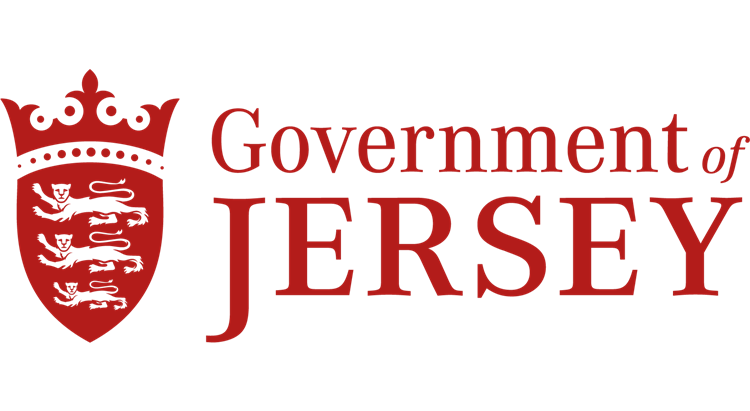Suppression of the Alien Priories and Dissolution of the Monasteries
Jersey never saw the dissolution of the monasteries which happened later in England. That is because King John, having lost Normandy, decided that the priories in Jersey whose mother houses were in France, should be suppressed – they were considered “alien priories”.
Now we all know about the dissolution of the monasteries under Henry VIII and Thomas Cromwell, and that is invariable seen either as a good thing – they were corrupt and venal and had lost sight of their founding purpose – or as a bad thing – it was an anti-Catholic act!
The speed of it and the fact that it is part of English history – taught in schools, presented in history programmes – mean that it has become famous – or infamous.
But I began to thinking about Europe, for there were once thousands of monastic orders across Europe, not just in those territories which became Protestant, but also the Catholic heartlands. And yet there are not many around today. So what happened to them?
Protestant Germany
As might have been expected in Europe, closures also began in Germany. The significance here is the Treaty of Westphalia (1648) which ended the Thirty Years' War (1618–1648) in the Holy Roman Empire, with the Habsburgs (rulers of Austria and Spain) and their Catholic allies on one side, battling the Protestant powers (Sweden, Denmark, and certain Holy Roman principalities) allied with France, which was Catholic but strongly anti-Habsburg under king Louis XIV.
Soon after this, with Protestant Germany, more than a hundred monasteries and innumerable other religious foundations disappeared.
Josephinism: The Move to a Secular State
But parts of the German Empire remained attached to the Catholic faith. The major change came with the Emperor Joseph II.
“Josephinism” was a termed used for the collective domestic policies of Joseph II, Holy Roman Emperor (1765–1790). During the ten years in which Joseph was the sole ruler of the Habsburg Monarchy (1780–1790), he attempted to legislate a series of drastic reforms to remodel Austria in the form of what liberals saw as an ideal "Enlightened" state.
Regarding the Catholic Church, Joseph was virulently opposed to what he called "contemplative" religious institutions, which he saw as reclusive institutions that were seen as doing nothing positive for the community.
By Joseph's decree, Austrian bishops could not communicate directly with the Curia anymore. More than 500 of 1,188 monasteries in Austro-Slav lands (and a hundred more in Hungary) were dissolved, and 60 million florins taken by the state. This wealth was used to create 1,700 new parishes and welfare institutions.
The monasteries of Styria were soon closed, though some houses escaped at this time (Kremsmünster, Lambach, Admont). All those in Carinthia and the Tyrol were suppressed. The emperor showed no consideration toward the venerable Abbey of St. Martin of Pannonia and its dependencies. In Hungary the Benedictines were entirely wiped out.
The death of Joseph II put an end to this policy, without, however, stopping the spread of those opinions which had incited it. His brother, Leopold II (d. 1792) allowed things to remain as he found them, but Francis II (Francis I of Austria, son of Leopold II) undertook to repair some of the ruin, permitting religious to pronounce solemn vows at the age of twenty-one.
Bavaria
At the same time, The Elector Maximilian (Joseph) III (1745-77) began in Bavaria a work of suppression of monastic orders which was carried on by his successors down to the Elector Maximilian Joseph IV, Napoleon's ally, who became King Maximilian I of Bavaria in 1805 (d. 1825).
During the secularization of 1802–1803, monastic lands and buildings were seized by the state or sold. Bavaria became a secular state and many monasteries, although still referred to as such, nowadays house schools, businesses or even luxurious holiday accommodation.
The religious orders in Bavaria were first deprived of all property rights and prohibited to receive novices. The convents of the mendicant orders (Franciscans, Dominicans, Augustinians, and Carmelites) and the religious houses of women were the first to fall. Then came the turn of the Canons Regular and the Benedictines. The cathedral monasteries were not spared. Among the abbeys that disappeared in 1803 may be mentioned the following: St. Blasien of the Black Forest, St. Emmeran of Ratisbon, Andechs, St. Ulrich of Augsburg, Michelsberg, Benedictbeurn, Ertal, Kempten, Metten, Oberaltaich, Ottobeurn, Scheyern, Tegernsee, Wessobrünn.
North Germany
The monasteries in other parts of North Germany met with the common fate of all church property. On the left bank of the Rhine they were suppressed when that territory was annexed to France by the Peace of Luneville, 9 February, 1801.
The Diet of Ratisbon (3 March, 1801- February, 1803) reconstructed German States under the influence of France and Russia and as a consequence most of the ecclesiastical estates were abolished.
Besides her twenty-five ecclesiastical principalities and her eighteen universities, Catholic Germany lost all her abbeys and her religious houses for men: their property was given to Bavaria, Prussia, and Austria. As to the religious houses for women, the princes were to consult with bishops before proceeding to expel their inmates. The future reception of novices was forbidden. In the Netherlands, the Principality of Liège, and the portions of Switzerland annexed by France, the religious houses disappeared completely.
Concluding remarks
It is clear that a major force in the suppression of the monasteries was the Emperor Joseph II, who was concerned to modernise the Empire according to the ideals of the Enlightenment; he was always positive that the rule of reason would produce the best possible results in the shortest time.
As with England, a major barrier to some reforms was the power of the Catholic church, and while not breaking from Rome, Joseph was determined to limit its influence, hence the suppression of the monasteries, which by this time, as in England, had strayed far from their founder’s ideals and were wealthy institutions, effectively rich landlords who contributed little to society. Monasteries owned nearly half of all Church land, and something like 20 per cent of all land.
In 1750, for example, Maria Theresa (the mother of Joseph II) commented that “no monastic House observes the limitations of its statutes, and many idlers are admitted; all this will call for a great remedy”.
But unlike Henry VIII, Joseph’s suppression of monasteries was based on an ideal, that of “utility. Contemplative orders and nunneries therefore fell easily to his axe. Only those monasteries were to survive that worked in caring for the sick, in education or providing pastoral services in parishes.
What mattered to Joseph was whether those religious houses brought benefits (hence “utility”) to the state. While Joseph dissolved monasteries that did not fit his criteria, he also transferred their resources to parishes and schools.
In a move to more control over the church, clergymen were also deprived of the tithe and ordered to study in seminaries under government supervision, while bishops had to take a formal oath of loyalty to the crown.
At the same time, his enlightened despotism included also the Patent of Toleration, enacted in 1781, and the Edict of Tolerance in 1782. The Patent granted religious freedom to the Lutherans, Calvinists, and Serbian Orthodox and the Edict extended religious freedom to the Jewish population.
By the time of his death in 1790, Joseph had cut off the Austrian Church from Rome, dissolved one-third of the monasteries in the Habsburg Empire, made marriage a state matter, granted toleration to Protestants, controlled clerical education, and restricted many religious activities.
And yet he was also part of a general trend against monastic orders and towards a more secular society across Europe. The religious wars that had been fought since the reformation has shown the bankruptcy of theocratic absolutism, and the gradual rise of tolerance and consequent reduction and movement against Papal control and influence.


















































